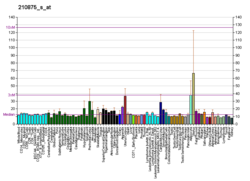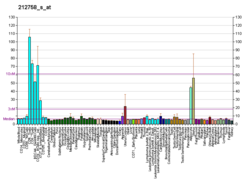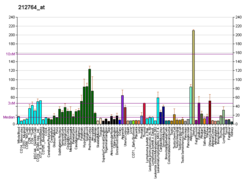Zinc finger E-box-binding homeobox 1 is a protein that in humans is encoded by the ZEB1 gene. [5] [6] [7]
ZEB1 (previously known as TCF8) encodes a zinc finger and homeodomain transcription factor that represses T-lymphocyte-specific IL2 gene expression by binding to a negative regulatory domain 100 nucleotides 5-prime of the IL2 transcription start site. [7] [6] ZEB1 and its mammalian paralog ZEB2 belongs to the Zeb family within the ZF (zinc finger) class of homeodomain transcription factors. ZEB1 protein has seven zinc fingers and one homeodomain. [8] The structure of the homeodomain is shown on the right.








